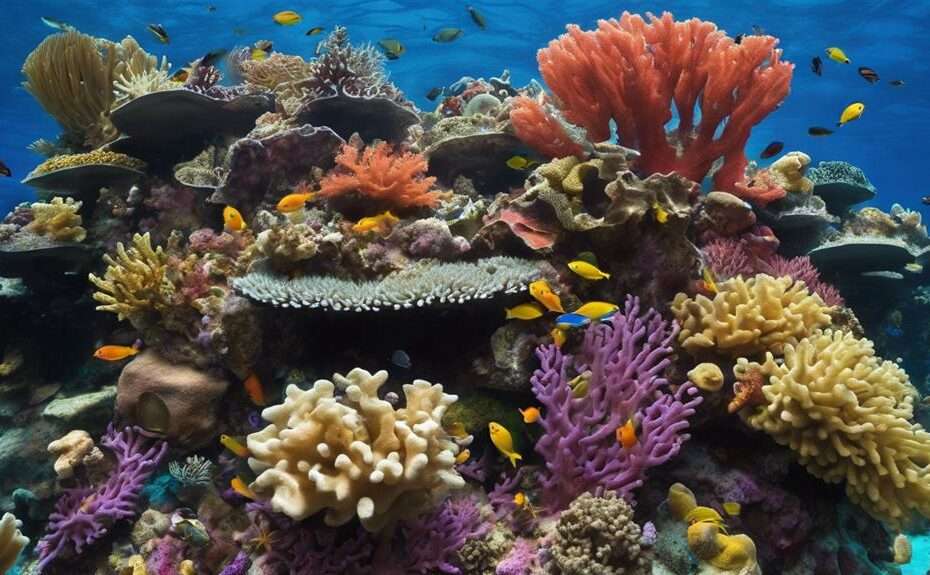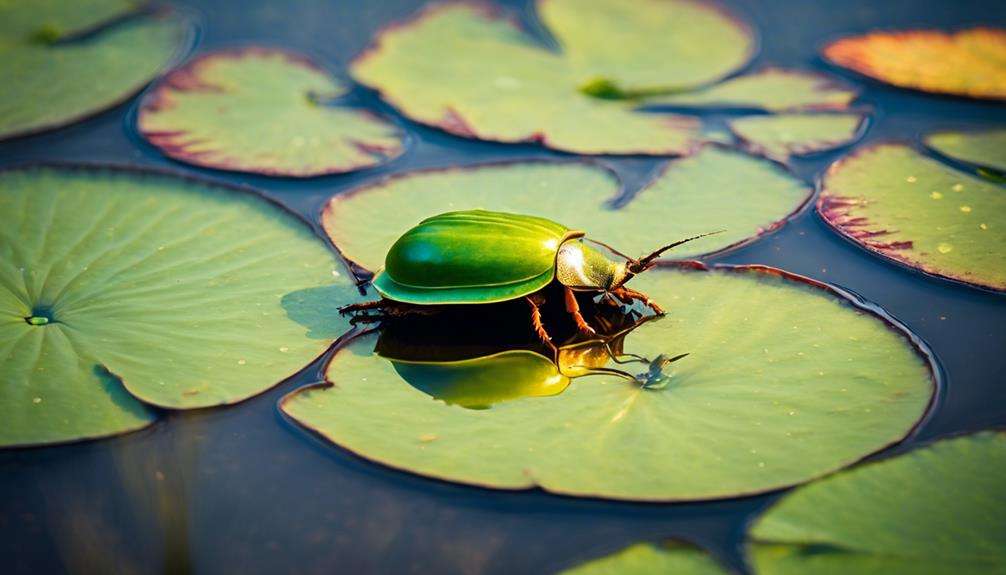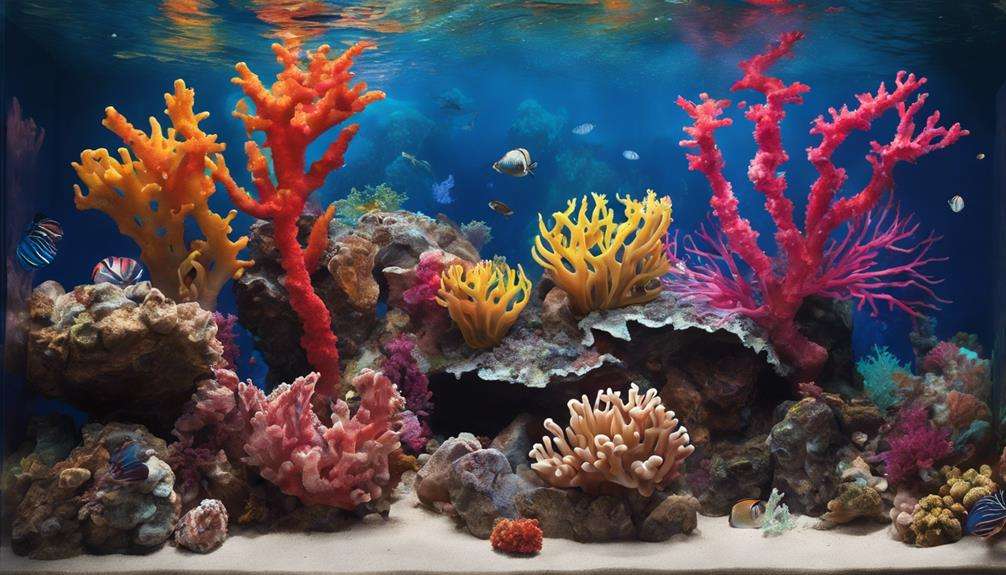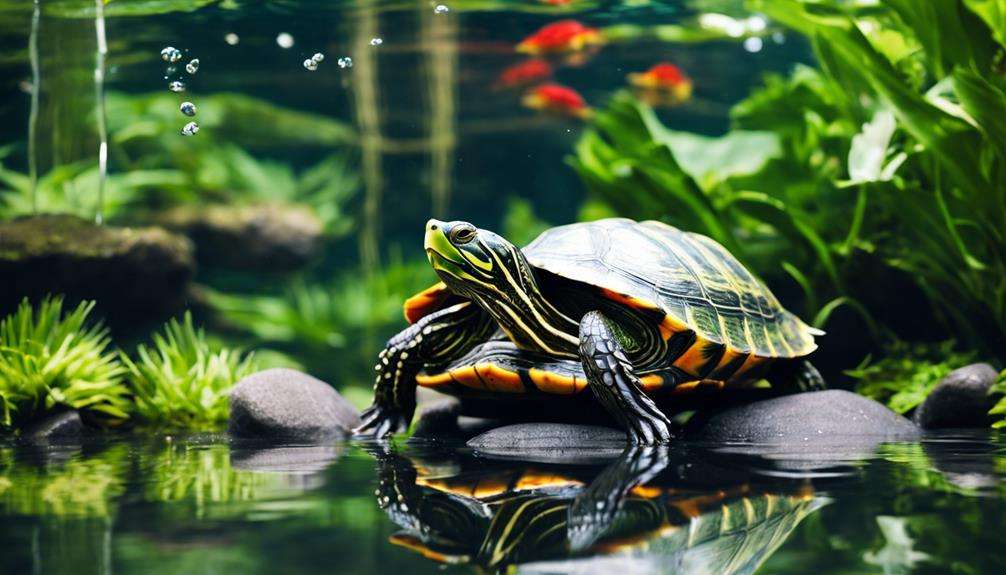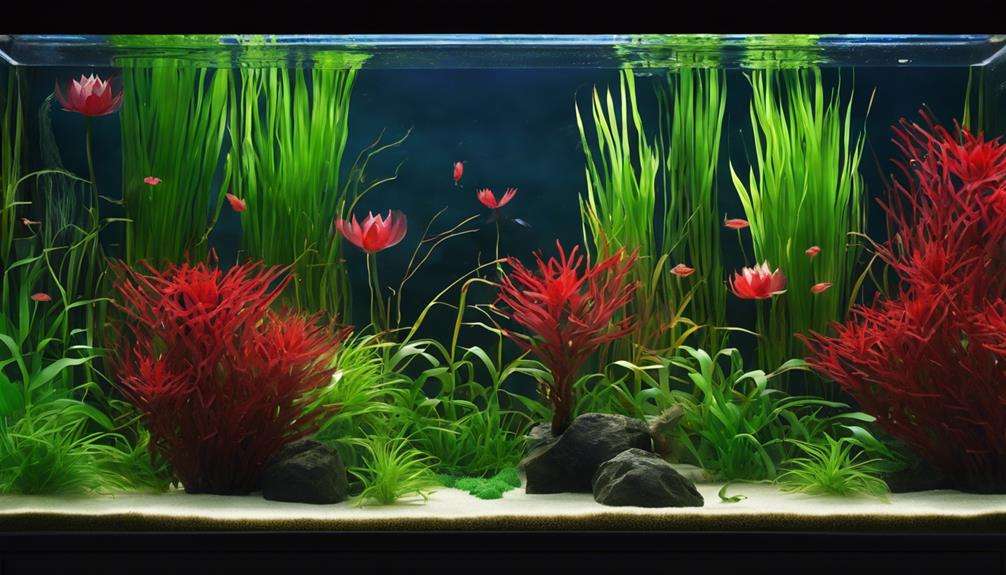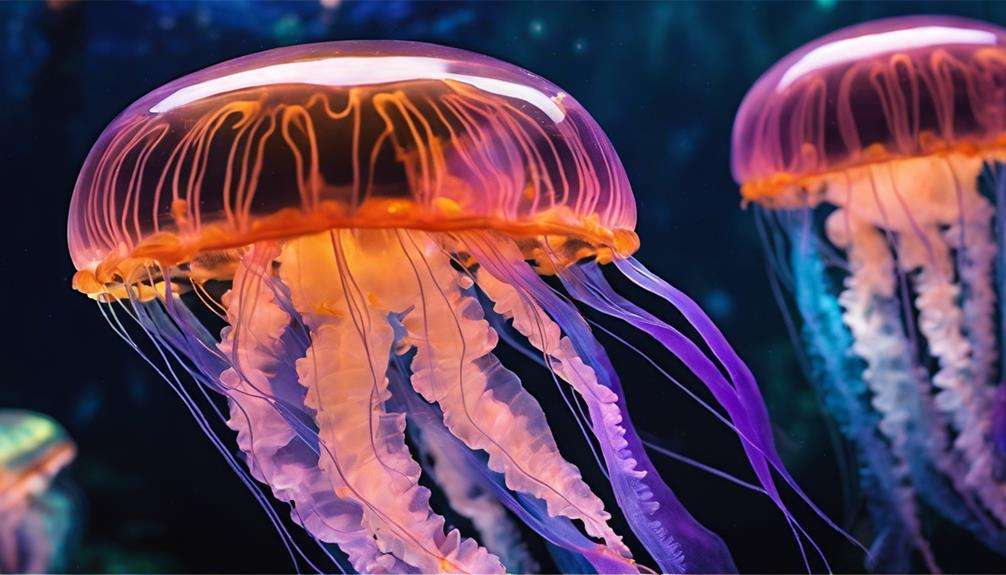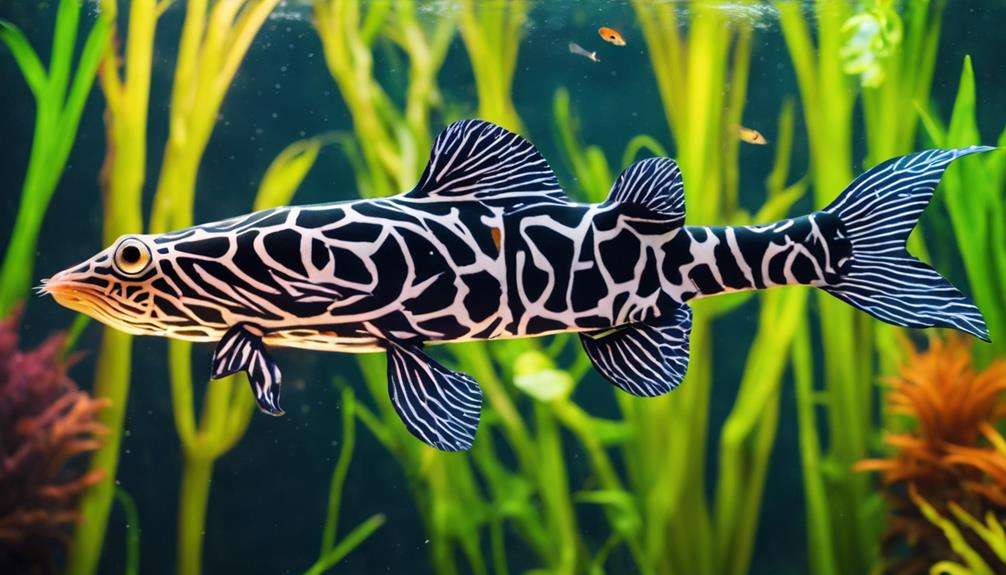Imagine the allure of your home aquarium evolving into a breathtaking seascape, adorned with rare corals that captivate with their intricate beauty and vivid hues.
As you explore the world of exotic marine life within your reach, you'll discover the art of curating a mesmerizing underwater sanctuary that echoes the wonders of the ocean depths.
Stay tuned to uncover the secrets behind cultivating a stunning home reef with rare corals, where each delicate addition holds the promise of transforming your aquatic haven into a living masterpiece.
Key Takeaways
- Prioritize rare coral species like Torches and Chalices for a captivating underwater display.
- Design a diverse coral reef layout with varying colors and shapes for visual appeal.
- Ensure optimal lighting and water quality to support the growth of rare corals.
- Implement proper flow, placement, and feeding to maintain the health and vibrancy of rare corals.
Selecting Rare Coral Varieties
When selecting rare coral varieties for your home reef, prioritize species like Torches, Chalices, Tenuis, and Leptogorgia Gorgonians to introduce unparalleled beauty and diversity to your aquarium. These rare coral species are highly coveted among aquarists for their unique colors, shapes, and patterns, elevating the aesthetic appeal of your underwater ecosystem. By incorporating these uncommon coral types into your home reef, you can create a mesmerizing underwater wonderland that captivates all who behold it.
Each of these rare reef corals hails from different parts of the world's oceans, offering a diverse array of species that bring a touch of exotic marine beauty to your aquarium. From the intricate branching structures of Torches to the intricate patterns of Chalices, each species has its own distinct charm. Tenuis and Leptogorgia Gorgonians, with their vibrant hues and delicate forms, add a sense of elegance and sophistication to your coral reef landscape. Selecting these rare coral varieties allows you to appreciate the beauty and diversity of marine life while also promoting conservation efforts to protect these delicate species for generations to come.
Designing the Ideal Coral Reef Layout
Consider incorporating a variety of coral species with diverse colors, shapes, and growth patterns to enhance the visual appeal and biodiversity of your coral reef layout. By combining different coral species, you can create a visually enthralling underwater landscape that mimics the complexity and beauty of natural coral reefs. When designing your coral reef layout, it's vital to take into account the specific requirements of each coral species regarding lighting, water flow, and spacing. This will make certain that each coral thrives and contributes to the overall health of the reef ecosystem.
To achieve an ideal coral reef layout, utilize live rock structures and aquascaping techniques to create natural hiding places and territories for the corals. This not only enhances the aesthetic appeal of the reef but also provides essential shelter for the coral species. Arrange the corals in a strategic manner that allows for easy access and maintenance, enabling you to care for and monitor the rare coral species effectively. Aim for a balanced composition that combines different coral specimens harmoniously, resulting in a visually stunning and thriving coral reef.
Providing Optimal Lighting Conditions
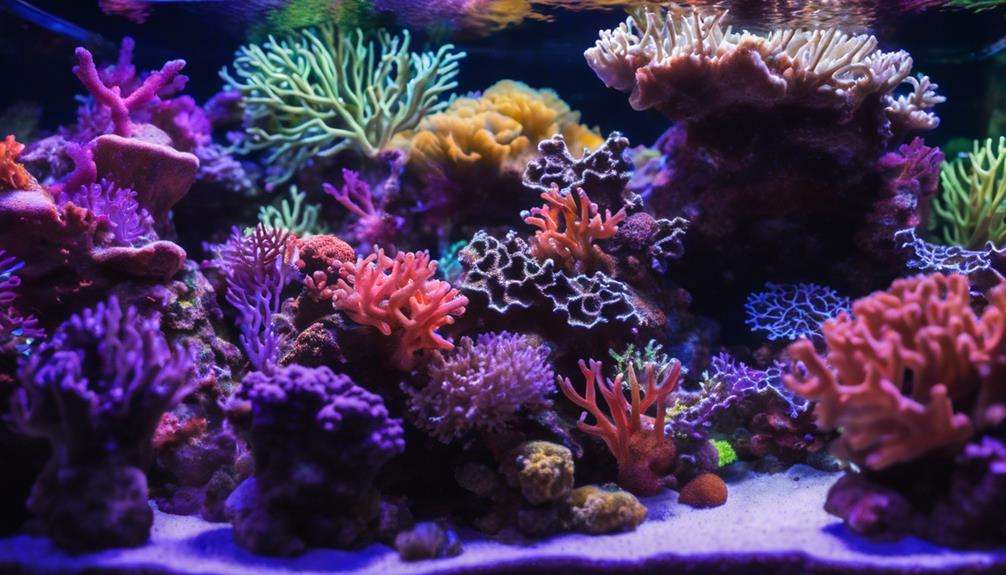
To optimize the growth and vibrancy of rare reef corals in your home aquarium, it's imperative to provide specific lighting conditions tailored to the individual light intensity requirements of each coral species.
Rare reef corals, such as Acropora or Montipora, thrive under metal halide, LED, or T5 lighting systems that offer the necessary light spectrum for photosynthesis and coloration. Understanding the light intensity needs of different coral species is key; while some corals like Acropora may require high light levels to flourish, others like Goniopora prefer lower light environments.
When introducing rare corals to a new tank, gradual light acclimation is essential to prevent stress and bleaching. Adjusting the lighting schedule and intensity based on the specific requirements of each coral species can help maintain their health and promote growth in your home coral reef.
Providing key lighting conditions is key to creating a stunning and thriving ecosystem for your rare corals.
Maintaining Water Quality for Rare Corals
How can you guarantee the prime health and growth of your rare corals in the home aquarium?
Maintaining ideal water quality is paramount. Ensure stable water parameters like temperature, pH, and salinity are within the appropriate range. Adequate water flow is vital for rare corals as it facilitates nutrient delivery and waste removal. Regular testing of water quality parameters such as ammonia, nitrate, and phosphate levels is essential to prevent detrimental imbalances. Research the specific dietary needs of your rare corals to provide proper nutrition for their growth.
To maintain pristine water quality, implement a reliable filtration system and perform routine water changes. These practices help to eliminate excess nutrients and maintain a healthy environment for rare corals to thrive. By closely monitoring and adjusting water parameters, you can create an ideal habitat for your rare coral species.
Implementing Proper Flow and Placement
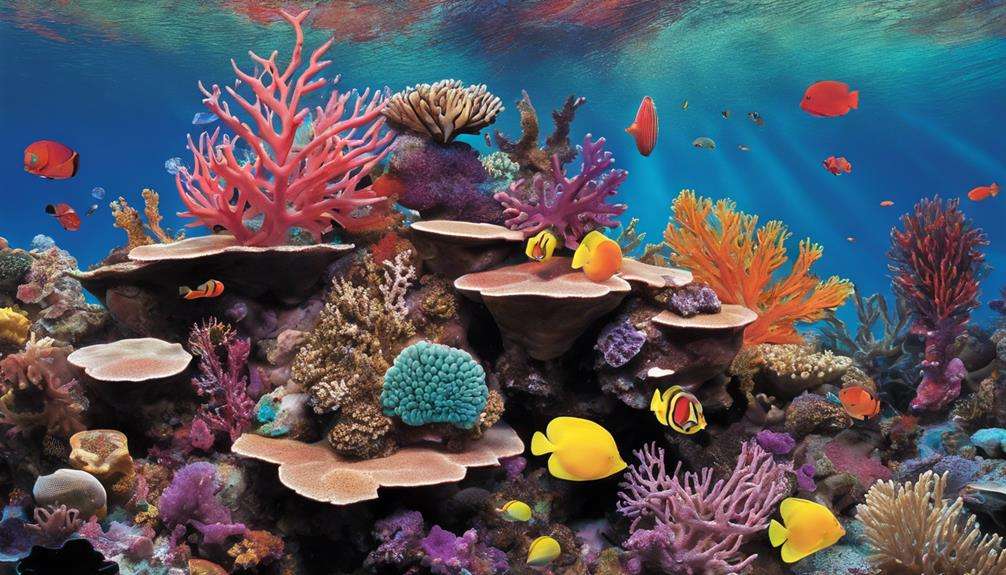
To create an ideal environment for rare corals, make sure that your water flow is optimized to deliver nutrients effectively while preventing stagnation.
Proper placement of corals within the tank is vital to avoid competition for light and space, promoting growth and vibrancy.
Flow for Coral Growth
Proper water flow plays a critical role in facilitating coral growth by delivering essential nutrients, removing waste, and preventing sediment buildup in the reef ecosystem. Different coral species have specific flow requirements, with some necessitating high flow for best health. Adequate water movement is vital in preventing algae overgrowth on corals and supporting their respiration and photosynthesis processes.
Placing corals in areas with suitable flow patterns guarantees they receive the necessary food and oxygen for survival. Maintaining the right flow velocity and direction in the aquarium replicates natural reef conditions, promoting coral growth and overall ecosystem health. By understanding and implementing proper water flow, you can create an ideal environment for your corals to thrive and flourish.
Strategic Placement Tips
Ensuring rare reef corals thrive requires strategic placement within the aquarium to optimize water flow and light exposure for healthy growth. Proper water flow is essential for delivering essential nutrients and oxygen to the corals.
By strategically placing corals to prevent shading and ensure adequate light exposure, you promote their well-being. Understanding the specific flow and placement needs of each coral species is important for creating a harmonious reef environment.
Consider the size and growth patterns of the corals when deciding their placement to prevent overcrowding and competition for space. Implementing a diverse flow pattern in the aquarium can mimic natural reef conditions, benefiting the rare corals and fostering their overall health.
Careful placement is key to creating a visually stunning and thriving reef ecosystem.
Ensuring Adequate Feeding Practices
To secure the best health and growth of rare corals, it's crucial to provide them with a well-balanced diet tailored to their specific nutritional requirements. Feeding these corals with phytoplankton, zooplankton, or specialized coral food supplements won't only enhance their colors but also contribute to their overall well-being.
Monitoring their feeding response closely allows you to adjust feeding schedules and quantities, preventing overfeeding and maintaining a thriving reef environment.
Proper Coral Nutrition
How can you determine the specific feeding requirements of rare corals in your home reef to promote their growth and vibrancy effectively?
Proper coral nutrition is vital for the well-being of rare corals in your reef. Understanding the feeding practices specific to each coral species is essential. Some rare corals may require direct target feeding, while others benefit from broadcast feeding. A balanced diet for these corals should include phytoplankton, zooplankton, and specialized coral foods tailored to their dietary needs.
It's important to avoid overfeeding, as this can lead to water quality issues and algae growth. Regularly observing your rare corals during feeding sessions allows you to assess their health and make necessary adjustments to optimize their growth and coloration.
Feeding Frequency Tips
Feeding rare corals in your home reef 2-3 times per week is essential to meet their nutritional requirements for best growth and vibrant coloration. Adjust the feeding frequency based on coral species, size, and health status to avoid overfeeding.
Target feeding with specialized coral foods such as phytoplankton, zooplankton, and coral-specific supplements guarantees they receive adequate nutrition. By maintaining a proper feeding schedule, you can also help uphold water quality by reducing uneaten food and waste buildup in the aquarium.
Consistent feeding practices contribute to the overall health, growth, and vibrant coloration of your rare corals, enhancing the beauty of your home reef. Remember, understanding the specific needs of your coral species is key to fostering a thriving marine environment.
Frequently Asked Questions
What Is the Hardest Coral to Care For?
Keeping Acropora SPS corals is challenging due to their sensitivity to water quality and lighting needs. Stabilizing parameters, providing high flow, and intense lighting are essential. Maintaining calcium, alkalinity, and magnesium levels is key.
Can You Make a Coral Reef at Home?
You can definitely make a coral reef at home! Use coral propagation techniques like fragging to grow a diverse reef ecosystem in your aquarium. Focus on proper tank maintenance, lighting, water flow, and stable parameters for healthy corals.
What Can You Do With Old Coral?
Transform old coral into stunning decorative pieces, repurposing them for artistic upcycling. Incorporate these remnants into jewelry, crafts, or educational displays. By donating to research institutions, you contribute to the advancement of marine conservation efforts.
Which Type of Coral Are the Most Important Reef Builder?
Stony corals, belonging to the Scleractinia order, are the most crucial reef builders. Their growth and accumulation over time create the structural foundation of coral reefs, supporting diverse marine life and maintaining ecosystem balance.
Conclusion
As you cultivate your stunning home reef with rare corals, remember that each coral is a unique piece of the intricate puzzle that's your underwater masterpiece.
Just as each coral species contributes to the beauty and diversity of your aquarium, so too do your efforts support the delicate balance of marine ecosystems worldwide.
Like a skilled artist painting a canvas, your careful attention to detail and dedication to conservation create a vibrant underwater world that's both mesmerizing and crucial.
